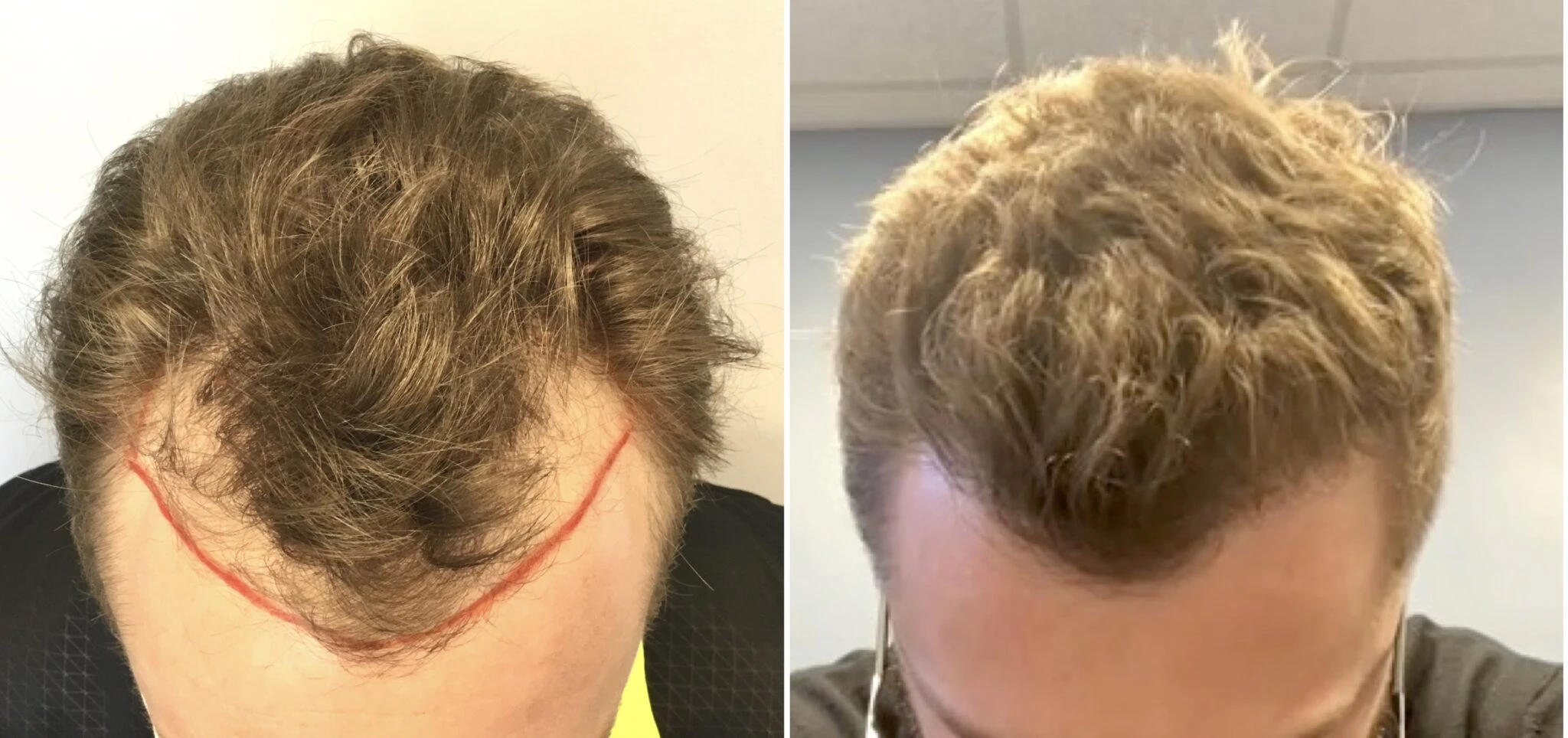
Right after a hair transplant, your scalp feels tender. There’s redness. Maybe swelling. Crusting. You’ve followed every instruction. Avoided hats. Slept upright. Washed gently. Still, each time you look in the mirror, you wonder—Is anything happening?
The early days are about healing, not growth. Grafts are anchoring. Blood vessels are reconnecting. But this isn’t something you can see. The scalp might look calm on the outside, but it’s very busy underneath.
This is the hardest part for many—waiting without reassurance.
Shedding happens before growth begins
Around week two or three, hair begins to fall out. Not all of it—just the visible strands from the grafts. This is called shock loss. It feels like failure. Like reversal. But it’s part of the plan.
The follicle remains in place, buried and intact. It just needed to release the hair it came with to make room for the one it will grow.
Think of it as pruning—not destruction.
Months two and three feel frustrating—but are part of the timeline
For many, this is the emotional low point. Nothing seems to change. You wonder if the surgery was worth it. If you imagined the thinning that now looks the same. Or worse.
Some patients even see increased shedding around the recipient area. Existing hairs weaken. But they usually return.
This phase demands patience. Not just with the process—but with your own expectations.
Hair usually starts growing between months three and four
Then, slowly, something shifts. Around the end of month three or early month four, short hairs begin to appear. They’re fine. Transparent. Easily missed unless you look closely. But they’re yours.
By month four, you begin seeing more. Not full density—but progress. These hairs are new, and they’re shy.
Some stay soft for weeks. Others darken quickly. Every scalp follows its own path.
By month five, growth starts to feel real
It’s not just wisps anymore. You wake up, and the outline of your hairline is more solid. You run your hand across your scalp and feel texture, resistance. The grafts are active now.
This is when styling habits begin to return. Not because you have full coverage—but because you’re starting to believe in what’s growing.
Month six to nine brings real visible changes
This is the window when others start to notice. Friends. Co-workers. Strangers in photos. They can’t quite name what changed—but something looks fuller, healthier, more confident.
You see it too. Hairlines sharpen. Cowlicks soften. Gaps fill.
And with every inch of progress, your trust in the process deepens.
Texture and strength begin to settle in
By month eight or nine, new hair starts behaving more like the rest of your hair. It holds shape. Accepts product. Doesn’t fall out at a light breeze.
This maturation matters more than density. It’s what makes the result feel like you, not like something recently repaired.
One year is when results stabilize—but growth may continue
At twelve months, most patients see about 85–90% of their final result. It’s when you start thinking less about your hair daily—because it’s no longer a question.
But some follicles, especially in the crown area, grow slower. You might see further thickening over the next six months.
So don’t rush to judge the outcome too early.
Your donor area changes too—but more quietly
While attention is often focused on where hair is added, the donor area—usually the back or sides—goes through healing too.
With proper technique, the scars are minimal. But there may be tightness, numbness, or uneven regrowth early on. These usually fade.
Caring for the donor area ensures your hair looks healthy from every angle.
What you do after matters as much as the surgery
Results aren’t just about the procedure. They’re about everything that comes after. How you wash. What you eat. Whether you smoke. How well you sleep.
Inflammation can delay growth. Poor nutrition can weaken strands. Stress can trigger temporary loss—even in transplanted hair.
Post-op isn’t just recovery. It’s partnership with your body.
Some grafts may never grow—and that’s normal
No technique guarantees 100% survival. Most success rates range from 85–95%. A few follicles don’t take root. Others grow, then fade.
But the design of a good transplant accounts for this. The goal is density, not perfection.
And in practice, those few missing strands rarely matter.
Hairlines settle into place—sometimes subtly
Your new hairline isn’t just about shape. It’s about expression. Softness at the temples. Density at the peak. These small decisions affect how you’re perceived.
With time, your forehead relaxes. Your brows soften. You may stop raising them subconsciously.
Hair restores more than appearance—it restores ease.
Styling returns—often with new appreciation
Around month ten or eleven, you try a new cut. Or buy a product you haven’t used in years. You run your fingers through your hair and feel ownership.
The anxiety that once filled mirrors fades. You style less to cover, more to express.
And for many, that’s when the journey starts to feel complete.
